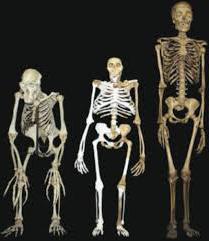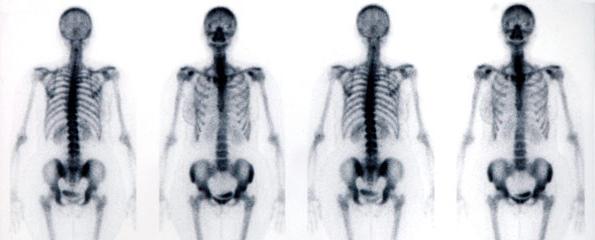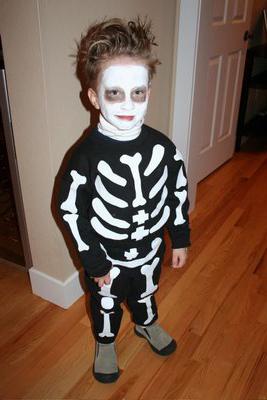The basis of the human skeleton. Bones of the skeleton
Man, thanks to his musculoskeletalcan move easily. Such a mechanism can be passive and active. The last part is the muscle mass of a person. The passive mechanism includes human bones connected in a certain way.

What is the human skeleton?
Skeleton translated from Greek meansdried or dried. This is a whole system or complex of bones that perform a large number of actions, including musculoskeletal, defensive, formative, etc. In general, the skeleton is the basis of the body, it has a mass from one seventh to one fifth of the total weight of a person. This is more than 200 bones, which can be paired and unpaired. The latter include the sternum, the vertebrae, the coccyx, the sacrum, the sternum, some bones of the cranium.
Skeleton Functions
The human skeleton contains internal organs,which it reliably protects from external, negative factors. The cranium protects the brain, the spinal canal - the dorsal, the thoracic bones protect the heart, lungs, large vessels, esophagus, etc. The hip base of the skeleton preserves the genito-urinary organs. It performs other functions, for example, participates in the metabolism, that is, maintains the mineral composition of blood at a certain level. In addition, some of the substances that make up the bones can also enter into the metabolic processes of the human body.
Bones are attached to bones, muscles, tendons -elements of the "soft skeleton", because they also contribute to the protection and retention of organs inside. Any part of the body can change its position in relation to each other, thereby moving us in space. It is these actions that perform the bones of the skeleton - in fact they are some kind of levers, driven by the muscles.

Form of bones
They differ in their form and perform various functions. There are tubular bones of the skeleton, which can be long (humerus) and short (phalanx of the finger).
Tubular bones consist of:
- The body is an elongated middle part.
- Thick ends - epiphyses.
The middle part of the bone is hollow inside. Wide and flat parts form the wall for the place where the internal organs are located, for example, bones of the skull, pelvic bones, sternum. Their length and width strongly prevail over the thickness. Consider a different shape of bones help the picture: the skeleton completely or individual types of bones. Mixed species have a rather complex shape and sometimes consist of several parts with different structure and shape, for example, the vertebrae.

Structure of bones
The basis of our body must be very strong,because the skeleton is a support that must withstand a sufficiently large weight, on average 60-75 kg. All the bones of the human skeleton have a complex chemical composition. They include organic and inorganic elements. Basically, these are salts of phosphorus and calcium (about 70%), making the bone more solid. Cells are 30% composed of organics, giving the body's basis elasticity and elasticity. The combination of these substances makes bone tissues more durable, and this is a very important point, since the basis of the skeleton should have just such properties.
In children and young people, bones are more elastic andFlexible, due to the greater content of organic substances. The older the person, the more fragile and, correspondingly, the more brittle. The main type of connective tissue is bone tissue, consisting of cells and intercellular substance. The plates are inserted one into the other, this structure provides high strength and at the same time lightness.
The bone also consists of dense and spongysubstance. The ratio depends on its location and functions. The dense substance is especially developed in those bones and their parts, of which the supporting and motive base of the human skeleton consists (for example, tubular bones).
Spongy substance consists of many plates,which are located in the direction of the greatest loads. In the short and flat bones, as well as at the ends (epiphyses) of the long between the plates, there is a red brain, from which blood cells are formed. The cavities of long bones of an adult are filled with fat cells. They are also called the yellow bone marrow. The outer part of the support arms is covered with a thin connective shell - the periosteum.

Growth of bones
Bones of the human skeleton slow down and soon quitestop their growth. In women, this occurs to 20 years, in men - to 25. Bones grow in width due to the division of cells of the inner layer of the periosteum. They also grow in length. Their size is increased due to the cartilage that lies between the body of the bone and its ends.
How do bones connect with each other?
All bones of the human skeleton interact betweenby yourself. There are continuous (fixed and semi-mobile) and discontinuous connections. The first case is said when the bones of the skull or pelvis are attached to each other. It means a fixed connection. Between the bones is a thin layer of connective tissue or cartilage. Some connections, for example, the skull are called serrated sutures. A more accurate understanding of how the bones are attached to each other will help pictures. Skeleton, bones of the skeleton, skull - all methods of connection are very clearly represented in these figures in the article.
Semi-mobile joints are attached to each other by the bones of the spine, the shins and the tibia. A small motor activity of these compounds attached to cartilaginous semirings. Make up the basis of the skeleton spine, skull, trunk, upper and lower limbs, but we'll move on to them a little later.
Movable joints of bones are joints. Everyone heard about them. For example, the joint between the bones of the pelvis and the thigh resembles a hinge in shape. That's where their name came from. This shape of the joint allows the bone to move forward and backward, make movements from side to side, and also rotate around its axis.
The joints are also elliptical, saddle,block and flat shape. In some types, only one axis can be moved (uniaxial joints), in others - around 2 axes (biaxial), etc. The joint is called "simple" if it is formed by two bones, and "complex" - if three or more.
Connective tissues of the skeleton
The skeleton consists of bones and cartilages. They, in turn, are formed from cells and dense intercellular substance. Bones and cartilages have a common structure, origin and function. The first develop from the latter, for example, the skull base bones, vertebrae, lower extremities, etc. Some bones develop without cartilage - this is the clavicle, lower jaw, etc.

In a human embryo and some vertebratesAn animal cartilaginous skeleton is about 50% of the total body weight. But gradually it is replaced by a bone, and in an adult this mass is only about 2% of the total body weight. Cartilages of the nose and ear, bronchi and ribs, intervertebral discs, articular cartilage, tracheal cartilaginous semicircles form the basis of the skeleton, because without them the full functioning of the entire human body as a whole is impossible.
Cartilages perform the following functions:
- Cover the connecting surfaces of the bone, making them more resistant to wear.
- Carry out depreciation and transfer of motion to compression, and the expansion of joints and intervertebral discs.
- Form the airways and the outer ear.
- To them tendons, muscles and ligaments are attached.

Axial skeleton
All bones are divided into an axial and an additional skeleton. The first consists of:
- Skull - the bone part of the human head, which contains the brain, the organs of hearing, sight, smell. The cranium consists of the facial and brain departments.
- The thorax - the bone base of the breast, consisting of twelve thoracic vertebrae, 12 pairs of sternum and ribs.
- The vertebral column or spine is the backbone of the skeleton. It is also called the main support of the entire human body. Inside the spinal column is the spinal cord.
Additional skeleton
The additional skeleton consists of two parts:
- Belt of the upper limbs, which providesthe attachment of the upper parts to the support, which is the basis of the skeleton. This belt consists of scapula and clavicles. The upper limbs consist of 3 sections: the shoulder, forearm and hand.
- Belt of lower limbs, which providesconnection to the axial skeleton, and also serves as a receptacle and support of the urinary, digestive and reproductive systems. It is formed from the pelvic, ischial, pubic bone. The lower extremity consists of the thigh, femur, patella, lower leg, foot, etc.

In this article, the structure of the skeleton of a person is very briefly, but the most meaningfully described. This is a very difficult question to study it completely, you need to study medical literature.






